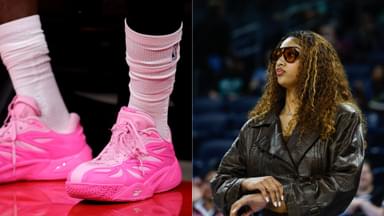The WNBA is more popular than it’s ever been, but with more popularity comes more scrutiny. That’s especially true in the wake of a spate of injuries that has sent some of the league’s biggest stars, including Caitlin Clark, Breanna Stewart, and Angel Reese, to the sideline.
Advertisement
With the All-Star Break in the rearview mirror, the playoffs race is heating up, so it’s really unfortunate that so many of the best players are missing time as the stretch run approaches. Is this injury epidemic an anomaly, though?
ESPN WNBA analyst Carolyn Peck believes that this is all avoidable, and she has the stats to prove it. Last night on WNBA Countdown, she pointed out that the league’s new schedule is having an adverse effect on player health.
“You’re adding a number of games without adding a significant number of days,” Peck said. “I think the wear and tear on these players, I think that’s really wearing on them this season. When you look at last season in 2024 — 116 days, you played 40 games. This season, 118 days — only adding two days — you’ve added four games,” she continued.
The WNBA schedule has really ramped up in recent years. Teams only played 34 games as recently as 2019. The NFL added a 17th game to its regular season schedule in 2021, but no other league has come anywhere close to adding 29% more games to its slate like the WNBA has.
ESPN put up a graphic that showed that the average number of days between games is just 2.7 this year. That’s lower than at any point in the last five seasons. Less time between games equals less time to recover, which equals more injuries, which equals a worse product.
“Coaches now are having to strategize, ‘Which days do I rest my players?’ and looking at which ones they can maybe take a game off, and this game’s more important,” Peck said. “And the fans deserve to see the players play every night. And I think that you’ve got to allow enough rest days for them to play at their best.”
Having healthy players taking days off is not what the league needs as it attempts to keep building momentum. Peck didn’t use the dreaded “load management” term, but she didn’t have to. That’s a subject the NBA has had to deal with in recent years as well, and after the string of Achilles tears to top players this spring, it’s clear that the problem still persists.
There’s not much the league can do this year to bring resolution, but in future seasons, the schedule needs to be stretched over a longer period so that players have a better chance to stay healthy. It’s certainly a subject to address this offseason in the negotiations for a better collective bargaining agreement.
In the meantime, fans will just have to get used to not always seeing their favorite players, a sad reality for a league that is otherwise doing a lot right to get fans engaged.








